|
One of the workers, Jesse, quietly developed some rapport with the wild horse and she remained quiet as he tried to puzzle through the situation. He was able to get a rope around her chest so she wouldn't sink deeper but clearly some specialized equipment was required. Animal Services arrived on scene and after helping free the horse's legs, but realizing she wasn't coming out, they called out LRTC's Technical Large Animal Rescue Team.
The on-site crew did manage to get the mare to drink some water from a bucket.
We responded with Rescue 3, Water Supply 1 and Transport 1 that was returning from a veterinary transport.
Three ladies who were members of the team were having lunch nearby. One had recently suffered an equestrian accident and was still moving about with the assistance of a walker. The heavy equipment operators at the scene were a bit taken aback when three ladies popped out of the first arriving private vehicle, with one using a walker. (They were quickly assured that the technical gear and other responders were on the way.)
The scene on the advance team's arrival.
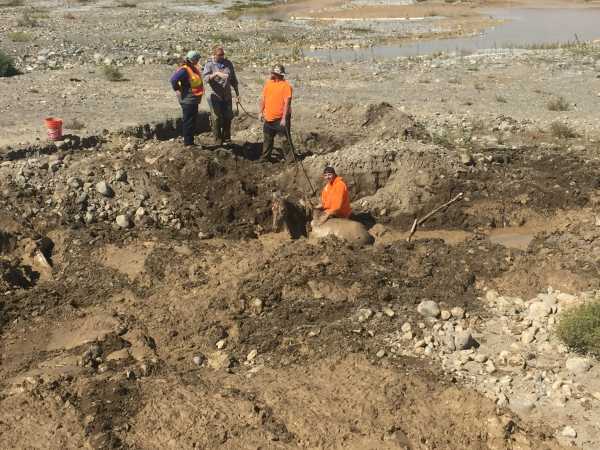
The advance team provided an assessment as to conditions and anticipated needs. The remainder of the response team staged at the entrance to the facility and were escorted back to the incident site.
Another view of the scene. The large ruts in the foreground were where the excavator started to sink.
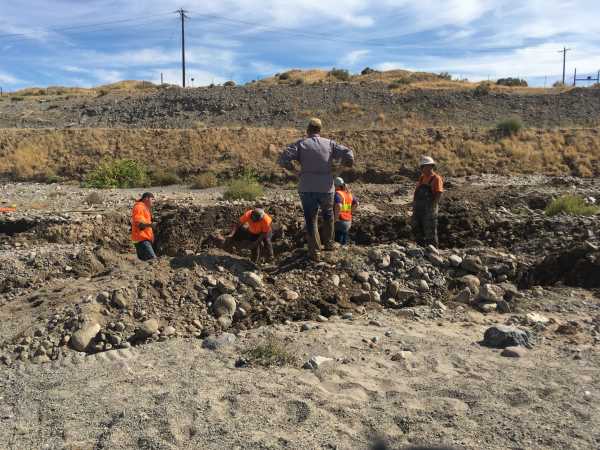
The first order of business involved establishing incident command. Designated positions included the IC who also served as Operations, Safety Officer, and Logistics (to coordinate heavy equipment.)
Initial safety protocols were established and a multi-stage action plan was developed. The horse wasn't going anywhere so there was time to consider various logical approaches, however hypothermia was an issue (the horse was shivering) so there was a need to move forward.
The first objective involved getting some kind of safe and useful strapping around the horse to stabilize the situation. The bog didn't facilitate the use of a proper lifting harness so two 30 ft. recovery straps were used. Tag lines were attached to the rescuers in forward positions.
The first strap was clipped to the rope that was already around the horse and fed under using the rope. A Nikopoulos needle was used to pass under the horse to thread the second strap.
Getting the recovery straps in place. Jesse is now attached to a tagline.
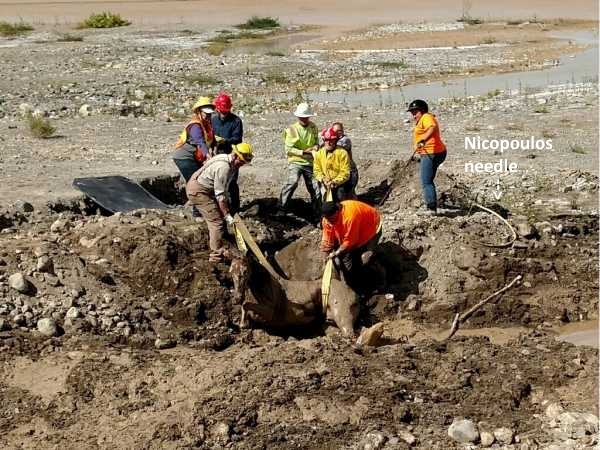
The second objective was to see if the horse could be freed from the stickiest part of the bog. The facility workers indicated that they were able to free the horse's legs earlier, although she settled back into the muck each time. We had our compressed air jetting wands on hand should they be needed to break suction.
We put some Rescue Glide Slip Sheets in place to provide a slip surface for the horse to slide up on, then initially pulled the horse by hand to prevent injuries in the event legs were still stuck. Fortunately the muck was soupy enough from the previous attempts to free the horse that all four legs pulled free.
Once we had determined that the horse was disentangled, we could use power equipment to get her far enough away from the bog that she wouldn't likely fall back in. The excavator was brought back in, this time a safe distance from the bog, and the recovery straps attached to the teeth of the excavator.
At this point we had a second safety briefing. Everyone understood their jobs and that once the horse was well clear of the bog, the excavator bucket would tip down to release the straps. Then the responders would quickly but quietly reposition the straps so that the horse wouldn't get tangled in them if she tried to get up.
Attaching the straps to the excavator. One person who could see the whole layout directed the operator.
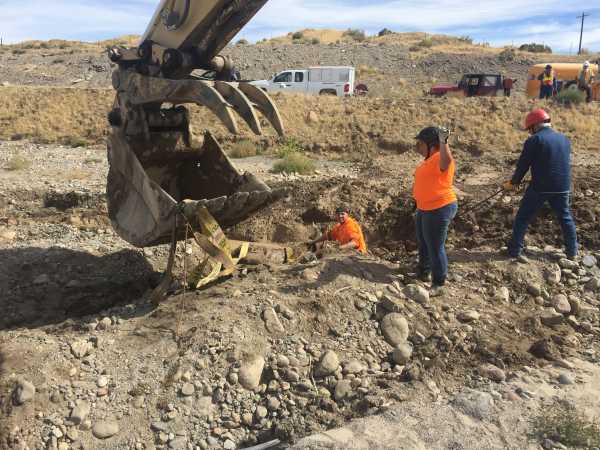
Some better perspective of the operation.
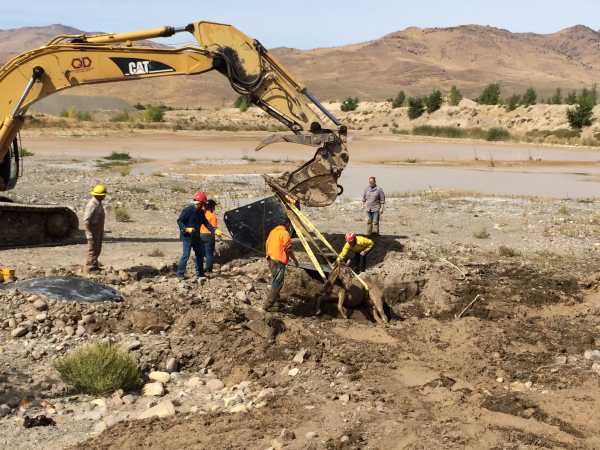
Everyone had some specific job to do.
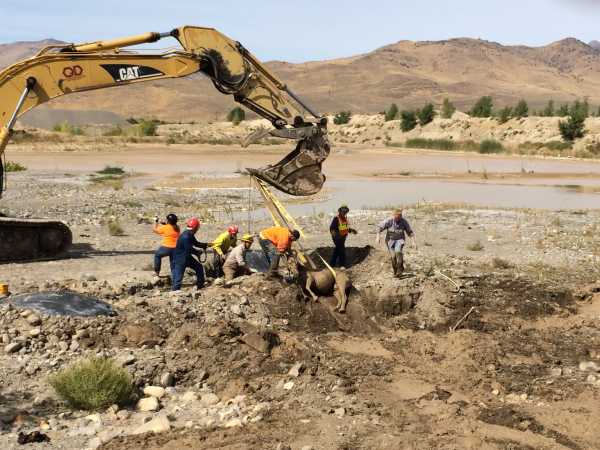
| 








